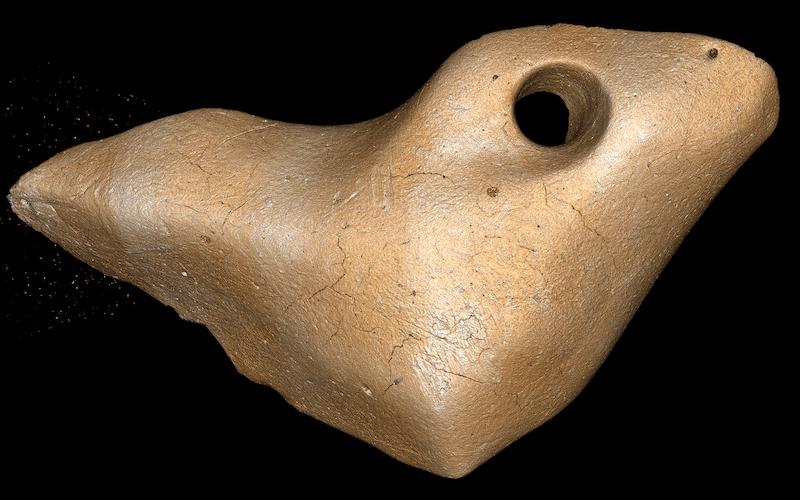Jewelry Dating 25,000 Years Ago Was Found in Brazil!

Jewelry made from giant sloth bones reveals humans were in South America at least 25,000 years ago.
Discovered in the Santa Elina rock shelter in central Brazil, three sloth osteoderms (bony deposits that form a type of protective armor on the skin of animals such as armadillos) were found near stone tools and had small holes that only humans could open.
The finding is among the earliest evidence for humans in the Americas, according to a paper published in the journal Proceedings of the Royal Society B.
The Santa Elina rock shelter, located in the Mato Grosso state in central Brazil, has been studied by archaeologists since 1985. Previous research at the site has revealed the existence of more than 1,000 individual figures and marks inscribed on the walls, hundreds of stone tool artefacts, and thousands of sloth osteoderms, with three of the osteoderms bearing evidence of man-made holes.
The newly published study documents these sloth osteoderms in minute detail to show that it is extremely unlikely that the holes in the bones were made naturally. The findings put the date when humans settled in Brazil between 25,000 and 27,000 years ago.
These dates are important because of increasing – but still controversial – evidence of very early human settlement in South America, such as the Toca da Tira Peia rock shelter in eastern Brazil giving a date of 22,000 years ago.
Using a combination of microscopic and macroscopic visualization techniques, the team discovered that osteoderms and even their tiny holes were polished, and recorded stone tool cuts and scrape marks on the artifacts. Animal-made bite marks on three osteoderms led them to rule out rodents as the creators of the holes.
“These observations suggest that these three osteoderms were transformed by humans into artifacts, possibly personal ornaments,” the researchers wrote. says.
The osteoderms contained stone tool cuts and scrape marks, indicating that they had been modified by humans.
“It is almost impossible to define the true meaning that these artifacts had for the inhabitants of Santa Elina,” said study co-author Mírian Pacheco, a lecturer in paleontology at the Federal University of São Carlos. "However, the shape and abundance of osteoderms may have influenced the construction of a particular type of artifact, such as a piece of jewelry." says.
The presence of human-modified sloth bones along with stone tools from geological layers dating to 25,000 to 27,000 years ago is strong evidence that humans arrived in South America much earlier than previously assumed.
“Our evidence reinforces the interpretation that our colleagues working on Santa Elina have been talking about for 30 years,” said Thaís Pansani, a paleontologist at the Federal University of São Carlos. So, humans were in Central Brazil at least 27,000 years ago.” says.
The finding suggests ancient humans used sloth remains in a variety of ways, according to Matthew Bennett, a geologist at Bournemouth University who studies human-sloth interactions in North America but was not involved in this project.
It is possible that ancient people used these bones as jewelry.
According to Bennett, this is exciting work that could support the idea of human settlement in the Americas during the Last Glacial Maximum, the coldest part of the last ice age.
However, many archaeological sites in South America have not yet been fully studied. This means that the debate about humans coming to America will not end.
“We believe there must be more evidence waiting to be found in unexplored places in the rock shelters and caves of Brazil,” Pansani said. says.


